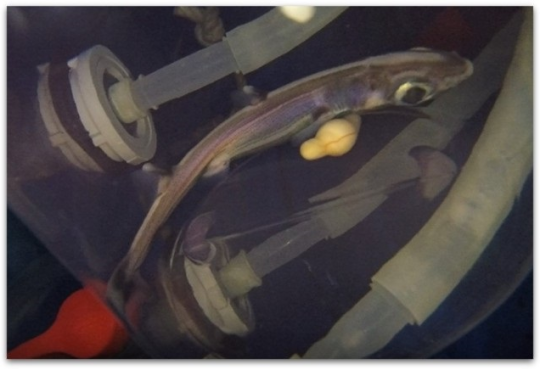BLUEPRINT OF LIFE ON MARS | They discovered life where they least expected it, it doesn’t need oxygen or sunlight, and it thrives deep below zero

Not only have microbes unique to Earth been discovered, but, for all that is known, they could survive on Mars, Europa or Enceladus, and scientists speculate whether the opposite is also true – that life on these celestial bodies developed on the same principles.
Scientists have rediscovered life in a place where it was unimaginable that it could exist.
In waters flowing through 600 meters of subzero permafrost, the salty, nearly oxygen-free Lost Hammer Spring in the Canadian Arctic is one of the harshest places on Earth. However, life finds a way here too. Scientists have discovered microbes thriving in salty water that springs up deep beneath the permafrost, which could serve as a model of what alien life would look like on the moons of Europa, Encelad or Mars.
Life in extraterrestrial environments will be difficult to find, and scientists are primarily looking for conditions that could sustain life. Oceanic worlds like Jupiter’s moon Europa and Saturn’s Enceladus may not have much in common with a desert world like Mars, but it has features that set the stage for life to form there, especially if found on Earth, in fairly similar conditions.
Microbes that could survive on Mars

Evidence suggests that extremely cold, salty oceans could lurk beneath the icy shells of Europa and Enceladus. Mars may also have liquid salt lakes locked beneath the surface. These environments are probably hypersaline.
Since salts lower the freezing point of water, they are probably below freezing as well. And more than likely they have extremely low oxygen. Not so long ago, scientists found evidence that beneath the southern polar ice cap of Mars, there may be hypersaline lakes.
Although this discovery is still hotly debated, if there are lakes there, Lost Hammer Spring is quite similar to what we think it might be.
Deep beneath the permafrost, water with less than one part per million of dissolved oxygen, about 24 percent salinity and temperatures around minus 5 degrees Celsius seeps to the surface. Given the similarity to possible Martian lakes, microbiologist Elisse Magnuson of McGill University in Canada and her colleagues looked to see if Lost Hammer Spring could be one of them.
“It took several years of working with the sediment before we successfully detected active microbial communities,” explained Magnuson.
Painstaking sample collection
“Environmental salinity interferes with both microbial extraction and sequencing, so when we were able to find evidence of active microbial communities, it was a very satisfying experience.”
The next step was a rough characterization of the microbial community. To do this, the team sequenced the remnants of genetic material found in their samples, sorting them into a series of microbes belonging to different known types of microbes.
Most of the microbes they found were completely new to science and had specific adaptations to allow them to not only live, but thrive, in a place like Lost Hammer Springa.
“The microbes we found and described at Lost Hammer Springa are surprising because, unlike other microorganisms, they do not depend on organic material or oxygen for life,” said microbiologist Lyle Whyte of McGill University.
They eat and inhale simple inorganic compounds
“Instead, they survive by eating and inhaling simple inorganic compounds like methane, sulfide, sulfate, carbon monoxide, and carbon dioxide, all of which are found on Mars.” They can also capture carbon dioxide and nitrogen gases from the atmosphere, making them all highly adapted to both survive and thrive in very extreme environments on Earth and beyond.”
This type of metabolism is known as chemolithotrophic and is only found in microbial organisms, at least here on Earth, and usually in quite extreme environments. So if there is life on Mars with a similar survival strategy, it’s probably, from what we know about both Earth and Mars, very small indeed.
The team plans to cultivate and study some of the most active members of the microbial community to try to learn more about how they have adapted to thrive in such a harsh environment. This information could help us better understand the likelihood of such organisms appearing on places like Mars, the researchers said.








